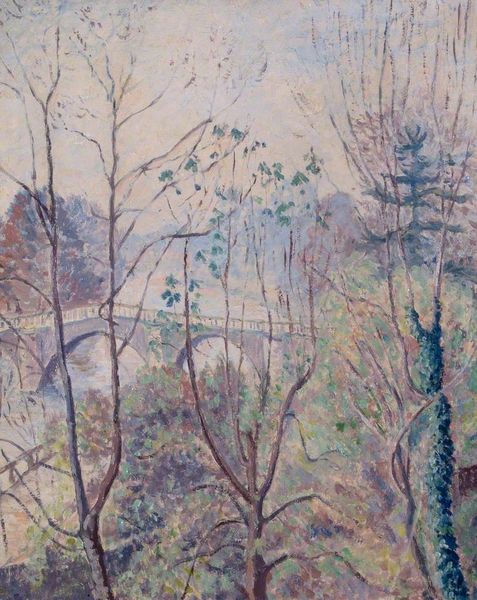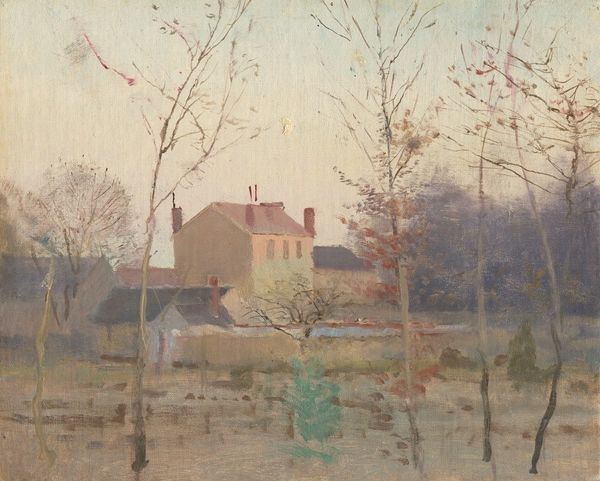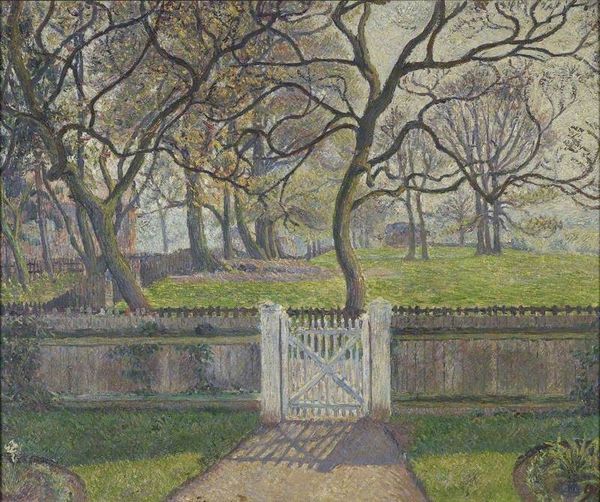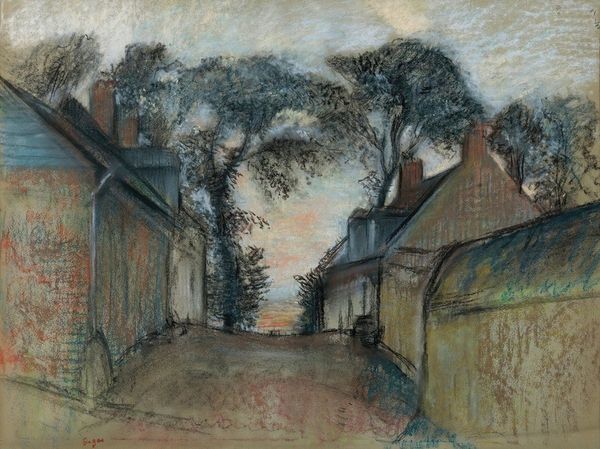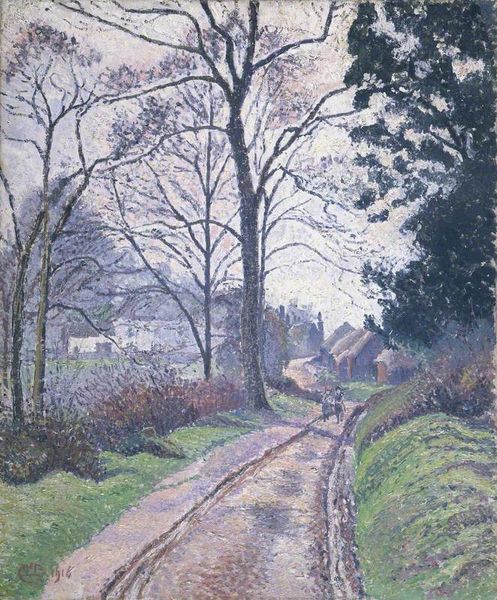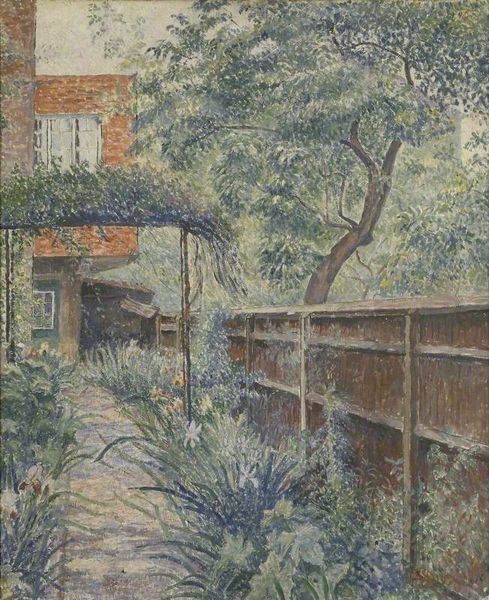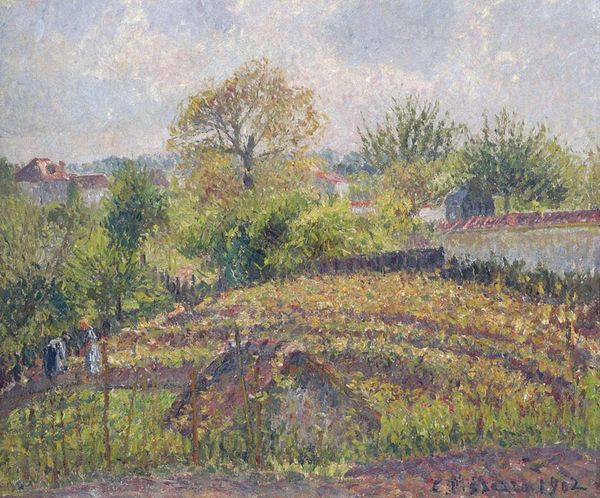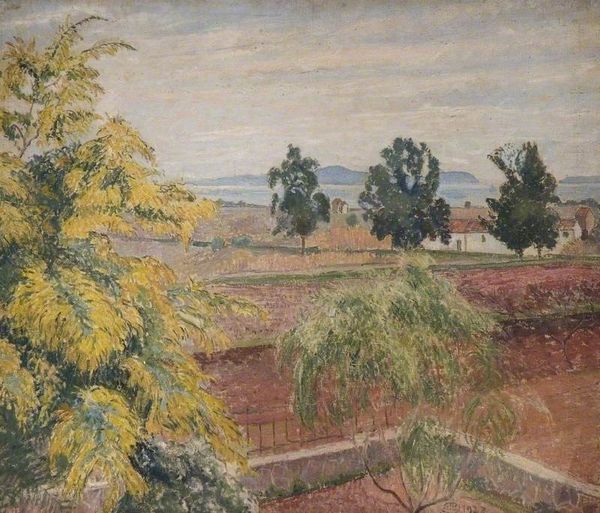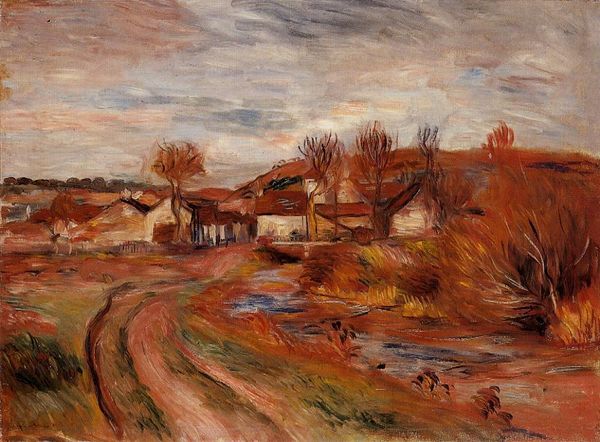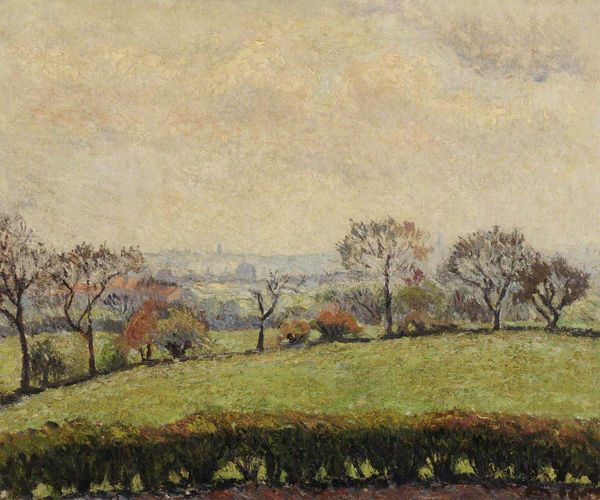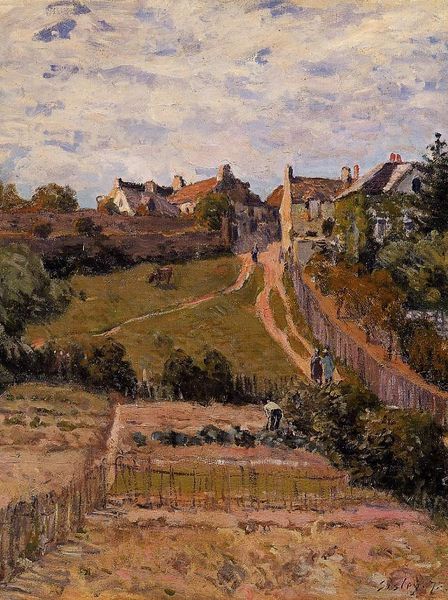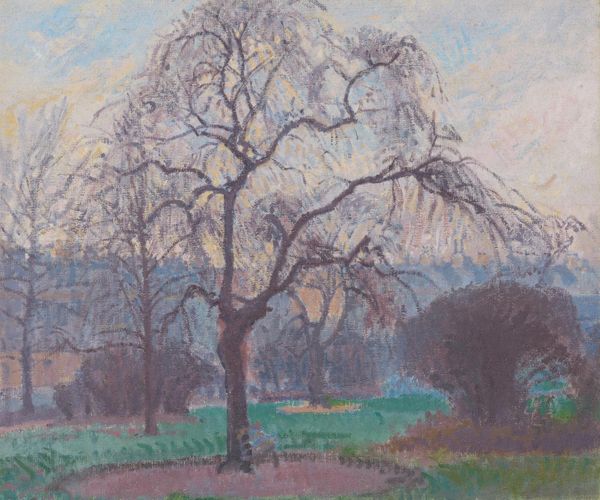
Copyright: Public domain
Curator: Lucien Pissarro created "Hoar Frost, Chiswick" using oil paint in 1906. It looks like a serene landscape shrouded in the hazy stillness of winter. What are your initial thoughts? Editor: There's a muted stillness that feels palpable. The colour palette seems restricted to browns and greys, evoking the bare, somber feeling of winter. A lone house is just visible behind some shrubs in the background, lending the scene an intimacy that draws me into its quiet mood. Curator: Indeed, the artist's subtle layering of colour establishes depth. Pissarro employs a complex structure where the vertical thrust of the bare trees act as pillars that break up the soft uniformity, leading your eye through to the main elements: the distant house in conjunction with the layout of the garden. How do you feel this aligns to Impressionist landscape painting? Editor: Chiswick, as we understand it, was transforming at the turn of the century. Growing urbanization altered not only the landscape but also its socio-economic structure, reflecting the move from an agrarian society to burgeoning suburbia. Perhaps painting 'en plein air' for Pissarro might have also been his commitment to representing that tension he felt. Curator: The dappled application of pigment speaks to an immersion with perception, aligning with Impressionist ideas—yet Pissarro heightens that into something else. There is a rigorous ordering of line and the blocks of tones build into forms rather than dissolving as some pure Impressionists aimed to achieve. We might say he takes a post-impressionistic approach to visual structure. Editor: Thinking about art and its relation to public space—and considering Impressionism—the Hoar Frost seems devoid of people in general, reflecting perhaps the increasingly anonymous conditions for city life and labour at the time. Do you consider that to be the case here? Curator: Interesting thought. It pushes us to rethink the silent house hidden behind nature. Perhaps, Pissarro tries to capture the bare bones of reality which he perceived through the landscape. Editor: Reflecting, it's incredible how an understated picture of a frozen landscape can hold such an intricate sense of cultural weight. Curator: Absolutely, seeing that silent depth emerge from the forms elevates the canvas to be more than a plain rendition, capturing complex, structural subtleties in such a simple scene.
Comments
No comments
Be the first to comment and join the conversation on the ultimate creative platform.
